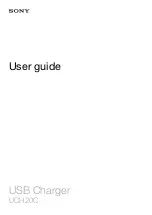
© by WilTec Wildanger Technik GmbH
Item 30561
Page 4
06 2020-1
•
Attention!
The test slots of the batteries must be opened during charging.
Explosion
hazard!
•
Only fill in the battery with distilled water after charging.
Operating principle
•
The device is a fully automatic battery charger for 12-V or 24-V batteries and supplied with 230
V,
50
Hz mains voltage.
•
Only use the device for charging batteries. Never operate other consumer loads with this battery
charger.
Charging time
The charging time depends on the battery. Rule of thumb:
charging time = battery capacity ÷ charging current
During the charging process, the charging current continues to drop, so that the calculated charging
time increases by at least ¼. The battery charger can also charge more batteries at the same time – in
this case, the charging process will take more time, of course.
Operating the battery charger WBL-GZL30
1.
You may commission the battery charger only after carefully having read the instructions.
2.
Place the battery charger and battery in a dry and well-ventilated place.
3.
Check if the battery charger is switched to the off position and the mains voltage is switched off.
4.
Connect the battery plus cable (+) of the battery charger to the battery-plus connection.
5.
Connect the battery minus cable (–) of the battery charger to the battery-minus connection.
6.
Make sure that the connection between the battery and battery charger is stable to ensure a
proper function of the battery charger.
7.
Check the correctness of the charging voltage stage
(2)
and charging setting
(4).
8.
Now pull the battery charger in to start the charging process.
9.
The battery charger records all signals to calculate the necessary charging voltage.
10.
Depending on the condition of the battery, it starts charging with a max. or min. charging current.
•
If the battery is empty, the charger starts charging the battery with max. current voltage.
•
With deep-discharged battery with large capacity, the overload protection might be activated
at the upper charging stages, especially at excessive mains voltage. In this case, first charge
the battery with a lower current stage (min.) shortly until the overload protection lasts.
•
As soon as the max. current voltage (high charging stage) is reached, the device switches
over
•
automatically to the compensating voltage phase.
11.
After a successful charging, turn the device off.
12.
First remove the battery minus-cable, then the battery plus-cable.
13.
If necessary, fill in the battery with distilled water.

























